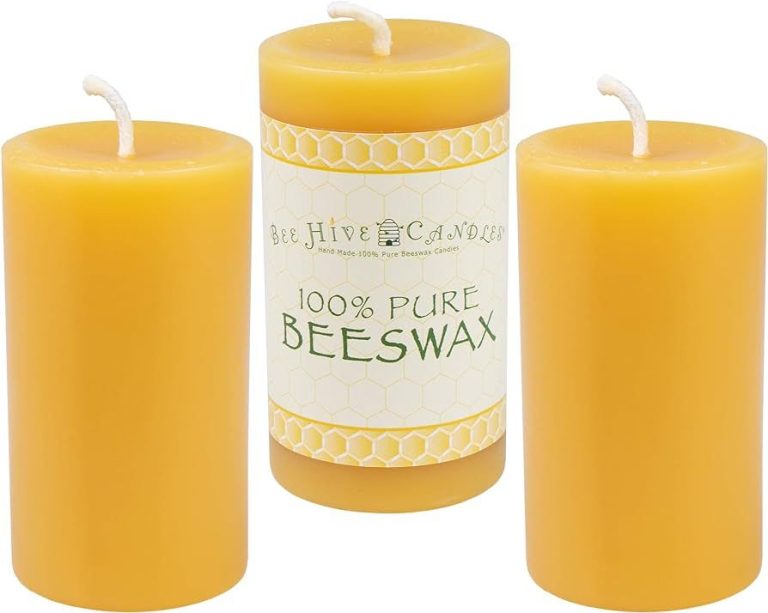What Candles Have Carcinogens?
There has been growing concern in recent years over potential health risks from burning scented candles, especially those containing carcinogenic compounds. Studies have detected trace amounts of chemicals like benzene, toluene, and formaldehyde emitted into the air when certain candles are lit. While the levels are generally low, some worry about the long-term effects of constant exposure. This has led many people to question whether popular candle brands and ingredients like paraffin wax are safe to burn in their homes.
This article will examine common candle ingredients, scientific research on emission levels, the highest risk candles, and safer alternatives. The goal is to provide an overview of the potential dangers and allow readers to make informed choices about candle usage in their households.
What are carcinogens?
Carcinogens are substances that can lead to the development of cancer. According to the medical dictionary, carcinogens are “any substance that causes cancer in humans or animals. Exposure to these agents can occur through inhalation, ingestion, dermal contact, and injection.” 1
Carcinogens may be chemical, physical, or biological agents that change living cells in a way that makes them multiply uncontrollably and become malignant. There are many different types of carcinogenic substances found in our environment.
Some common examples of carcinogens include asbestos, benzene, formaldehyde, radiation such as x-rays and UV rays from the sun, tobacco smoke, arsenic, and aflatoxin. Carcinogens are capable of causing cancer in humans and animals.
Common candle ingredients
Many candles contain ingredients that may have health risks when burned. Three common concerning candle ingredients are:
Paraffin wax

Paraffin wax is derived from petroleum and is the most widely used candle wax. When burned, paraffin candles release compounds like toluene and benzene, which are known carcinogens (source). Studies show paraffin wax candles emit significant amounts of soot into the air as well (source).
Synthetic fragrances
Most scented candles use synthetic fragrance oils derived from petroleum instead of natural essential oils. These synthetic fragrances contain chemicals like phthalates and VOCs that can be irritating to the eyes, skin, and respiratory system (source).
Chemical dyes
Candles are often dyed with artificial colors that may contain heavy metals like lead. Lead is a neurotoxin, and exposure has been linked to health issues (source).
Potential carcinogenic compounds
Certain chemicals commonly found in candles have been associated with increased cancer risk when inhaled. Key compounds of concern include:
Benzene – A known human carcinogen that has been linked to leukemia and other blood cancers (Source). Benzene can be released from burning candles containing synthetic fragrances.
Toluene – Classified as possibly carcinogenic to humans. Chronic inhalation exposure has been linked to kidney and liver damage (Source). Toluene is another component of synthetic fragrances.
Lead – Lead compounds are probable human carcinogens and neurotoxicants. Lead core wicks were phased out but may still be present in older or imported candles (Source).
Formaldehyde – A known human carcinogen that can irritate the eyes and respiratory tract (Source). Formaldehyde is released from incomplete combustion of candle wax.
Studies on carcinogen levels
Several laboratory studies have tested candles for the presence of carcinogenic chemicals. In one study published in the journal Air Quality, Atmosphere & Health, researchers tested emissions from burning candles made from paraffin wax, soy wax, and beeswax (Adamowicz et al., 2019). They found that paraffin candles emitted high levels of toluene and benzene, both known carcinogens. Soy candles emitted lower levels, while beeswax candles emitted almost none.

Another study in Indoor Air tested scented candles made from paraffin, soy, palm, and beeswax (Derudi et al., 2014). Paraffin candles produced the most emissions of carcinogens like benzene and toluene, especially when scented. Soy and palm candles had fewer emissions, while beeswax had the lowest. The researchers concluded that paraffin wax candles pose the highest risk of toxic emissions.
Highest risk candles
Certain types of candles may pose higher risks of emitting carcinogens when burned. Candles made with synthetic fragrance oils or paraffin wax tend to produce more soot and release higher levels of VOCs compared to candles made from natural materials like soy, beeswax, or essential oils.
Synthetic fragrance oils are complex mixtures of chemicals that are used to produce desired scents in candles. However, when burned, some of these chemical ingredients can break down into potentially hazardous compounds like benzene and toluene https://cancerfactfinder.org/consumer-products/scented-candles/. Benzene is classified as a known human carcinogen by the International Agency for Research on Cancer (IARC).
Paraffin wax is a petroleum byproduct made from crude oil refining. It’s commonly used in candles because it’s inexpensive and easy to work with. However, paraffin wax tends to produce more soot emissions compared to natural waxes. The soot contains polycyclic aromatic hydrocarbons (PAHs), some of which are probable or possible human carcinogens according to the IARC https://www.nytimes.com/2021/11/09/well/scented-candles-health.html.
Lower Risk Alternatives
There are several lower risk candle alternatives that can provide fragrance and ambiance with fewer concerning compounds. Some of the top options include:
Beeswax Candles
Beeswax candles are often considered one of the healthiest candle options. As reviewed by USA Today, “Beeswax candles have a low melting point so they don’t release potentially toxic soot into the air” (Are candles bad for you? Shop non-toxic options – Reviewed). Beeswax is a natural wax made by honeybees that burns cleanly.

Soy Wax Candles
Soy wax is made from soybean oil and is another popular natural candle wax. One Green Planet explains that soy wax candles “come from a renewable resource, are biodegradable and burn clean” (8 Eco-Friendly Alternatives to Scented Candles). Soy wax also has a lower melting point than paraffin wax.
Essential Oil Candles
Candles made with essential oils rather than synthetic fragrances can also reduce exposure to concerning compounds. Essential oil candles allow you to enjoy aroma therapy benefits and tailor scents to your preferences.
Tips for safe candle usage
Proper wick trimming and ventilation are key tips for safely using candles to reduce potential health risks. According to this article, wicks should be trimmed to 1/4 inch before lighting to prevent uneven burning and excessive smoke. Long or crooked wicks disrupt the melt pool and can release more soot. Trimming the wick regularly as the candle burns down is also recommended.
In addition, candles should be kept away from drafts, vents, and air currents to prevent uneven burning, according to this source. Good ventilation when burning candles is important, but avoiding direct air flow on the flame can reduce smoke. Place candles away from frequently opened doors or windows. Using candles in an enclosed space with poor ventilation can concentrate pollutants. Proper ventilation, along with wick trimming, allows candles to burn cleaner and more safely.
Potential Health Risks
Burning candles, especially scented candles, may pose some potential health risks that are important to be aware of.
One of the biggest concerns is an increased risk of cancer. According to a Healthline article, burning scented candles releases volatile organic compounds like formaldehyde and benzene, which are known carcinogens. Even low levels of exposure over time may accumulate and increase cancer risk.

Candle smoke can also aggravate respiratory conditions like asthma. The smoke contains fine particulates that can irritate lungs and worsen breathing problems. Those with respiratory sensitivities should take precautions like ensuring proper ventilation when burning candles.
In general, it’s a good idea to limit exposure by not burning multiple candles for prolonged periods, particularly in small enclosed spaces. Those concerned about health risks can opt for unscented candles made from natural soy, beeswax, or other clean-burning waxes.
Conclusion
While certain compounds in some types of candles may have potential carcinogenic effects, this does not mean you need to avoid candles completely. The key is being an informed consumer by researching candle ingredients, avoiding the highest risk options like paraffin candles, and practicing safe usage habits like keeping wicks trimmed. Quality candles made of natural waxes like soy, beeswax, or coconut oil that are free of synthetic fragrances and dyes are the safest options.
The bottom line is moderation and safety. Burn candles in well-ventilated rooms, keep wicks short, blow them out after a few hours, and choose unscented or naturally scented varieties. With some care taken in selection and usage, candles can be enjoyed safely.




